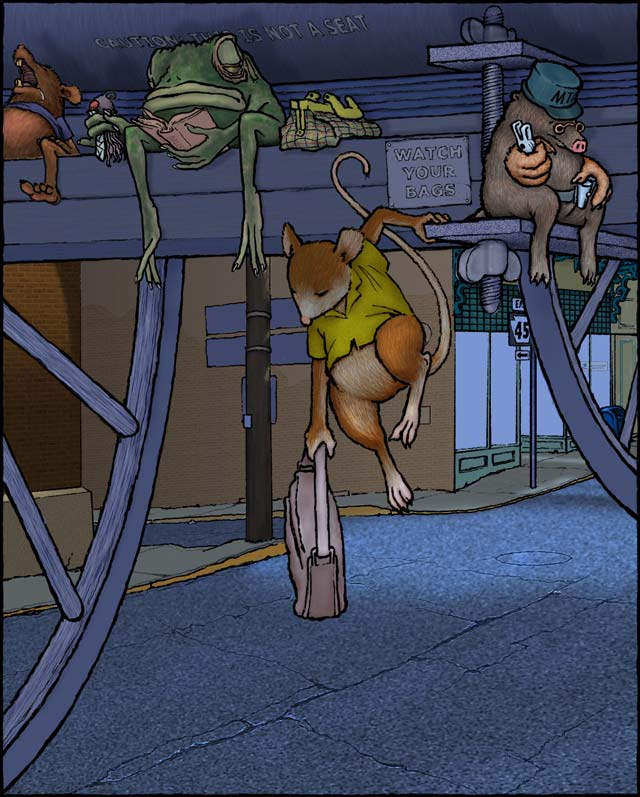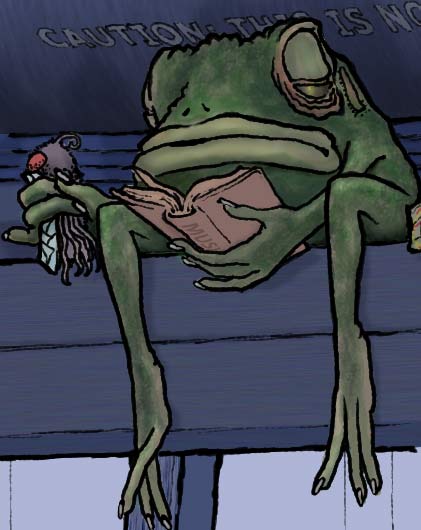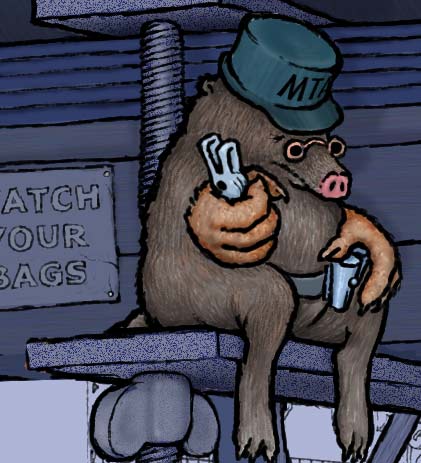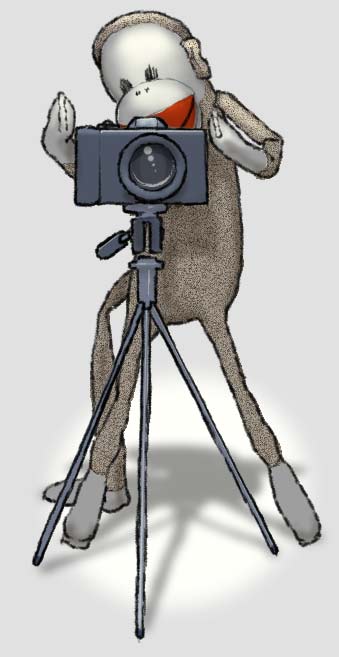In my work blog, I’ve already mentioned that to show appreciation, the simplest, easiest, most effective way is to, well, appreciate something or someone. That’s sincerely appreciate, not appreciate in the Harvard Business Review sense where you learn how to appear sincere so people follow you willingly. I’d like to add that post here because in retrospect it’s become one of my favorites. I’d proposed a demonstration. I write about a few things that I appreciate and maybe, by example, what I was talking about regarding my bauble [ a 15 year comemorative “appreciation” plaque ] will become clear. And if I’m right, nothing I say will be a surprise because I’m merely writing down things that I’ve felt and responded to, in some cases for 15 years. It should all be obvious.
First, Molly Kline. I don’t know anything about Molly. I don’t know if she’s married or single, has kids or not, lives thirty miles away or lives across the street. I don’t know the difficulties she may have just getting to work. What I do know is that Molly smiles. I know that any time I’ve asked Molly a question she has provided an answer. Neither are common reactions to me. Especially considering that Molly provides answers, guidance, and support to quite a few other people in ITS besides me. And she’s been pleasant and understanding about all the crap a bitter old man can dish out. Thanks Molly. When you ask How are you doing? you sound like you actually want to know.
Next, but in no order other than random selection, is the ETS Radar O’Reilly Barb Smith. I know more about Barb. Barb is raising kids, responding regularly to a widespread and complex family, working while her life partner works a different shift, and she still gets to work before 8 am. She stays till after 6 pm. That’s dedication. I sat on the floor playing cars with her boys back when the youngest wouldn’t speak to strangers. We built forts in the hall of Computer Building on Saturdays while Barb struggled to finish paper work that other people’s concerns kept her from finishing during the week. I’ve raised a daughter close to Barb’s kids in age. I understand when Barb says her family is her number one priority, but that just means sometimes you have to make the job take precedence. Thanks Barb. I hope your kids find great jobs, too.
I have known Brian Young for less time than anyone else that I could list. He’s much younger than I am, much more educated—different in a lot of ways, but the guy can finish most of my sentences. He has a daughter like I do. When he talks about her, I feel every word. I feel it too when he talks about the needs of faculty and the promise of education; his work, his dedication, is completely selfless. It’s common sense. Brian speaks with the most passion when he talks about faculty passion: their dedication, their excellence. Occasionally he speaks with equal passion about hamburgers, but really, for the most part, it’s faculty. Really. Thanks for what we’ll call sanity, Brian; you’ve kept the past year bearable.
These are a bit long. Sorry. Nobody has time to read so much. I’ll try to be brief. Or at least briefer.
Kim Winck taught me how to use a scanner. She was an old hand at computer imagery before I knew how to turn a computer on. Ever since then, I’ve been able to depend on her visual sensibilities. She’s organized, she’s meticulous, but mostly she’s an observant eye and an incisive, reasonable opinion. My work was always made better by her involvement. Thanks for all of that, Kim; but mostly for your friendship.
Although Tara Caimi was taken from our group soon after she started 10 years ago, we’ve collaborated several times since. She does her job, I do mine; she respects whatever I do and I have the luxury of being able to sit back and trust what ever she does. What a joy that is. Another artist who wants nothing but to be the best artist she can. Tara, you’ve introduced me to writers like Jeanette Walls, Abigail Thomas, Frank Conroy, and Sara Pritchard and you’ve helped fill my library with wonderful literary gems. Some of them written by you. Thank you.
When I talk about Pat Besong, it’s easy to mention the humor and easy going viewpoint that he brings to projects. Everybody loves it. Unless you’ve worked with him, depended on him, or asked for his help, you might miss his calm resolve, his resourcefulness, and his massive skill set. Pat will always find a way. Thumbs up.
Even though our paths should put us in the same place most of the time, I haven’t worked with Derick Burns very often. He does large scale stuff and I do small scale stuff. He works with a broad population, I work with one professor. He has an easy manor, while mine is often volatile. Yet in the end we see the same goal. Derick achieves with compassion, understanding and humility. I hope ITS gets to tap in to the talents I’ve been able to see during quiet moments talking with Derick. This is a good man. And in any zombie movie, he’d be alive at the end.
What could I say about Gary Chinn that isn’t obvious? Tremendous intellect, excellent taste, wonderful wit, loving family, funny hair there in the front where it sticks up. I may have worked with Gary only a couple of times, but really, to be around Gary is to be understood and appreciated. You make the neighborhood. Thanks, man.
How many years has it been since I’ve worked with Brian Shook? We used to share a cubicle. At 6 am the second floor of Computer Building was empty except for two guys. And we were squashed in a cubicle sitting four feet apart. If you have a daughter, Brian is the guy you want her to grow up to marry. Smart? sure. Driven? that too. But there’s something else about Brian: a warmth? an inner strength? Nobility? Peace?
Regardless of how busy Mary Janzen can get, every time I’ve knocked on her door and asked for help she has stopped to give me help: an opinion, a ruling, an insight in to editorial standards. Very gently, Mary nailed it. Every time. Thanks Mary; lucky for me not everyone knows the depth of your knowledge. Too bad for TLT and Penn State.
TK Lee stops by and when he leaves, I always have more to think about. He doesn’t give me work, just insight. TK thinks longer and harder about the things I think long and hard about. Curiously, it’s often just what I needed to talk about. We’ve never worked together on a project, actually. It would have been epic.
I think it’s important that none of these folks would be surprised by this post. I could be mistaken, but I hope that throughout my lifetime I’ve made positive feelings as well as negative feelings clear enough at all times. There’s no need to hire someone to feed the rabble, and there’s no lexan involved.
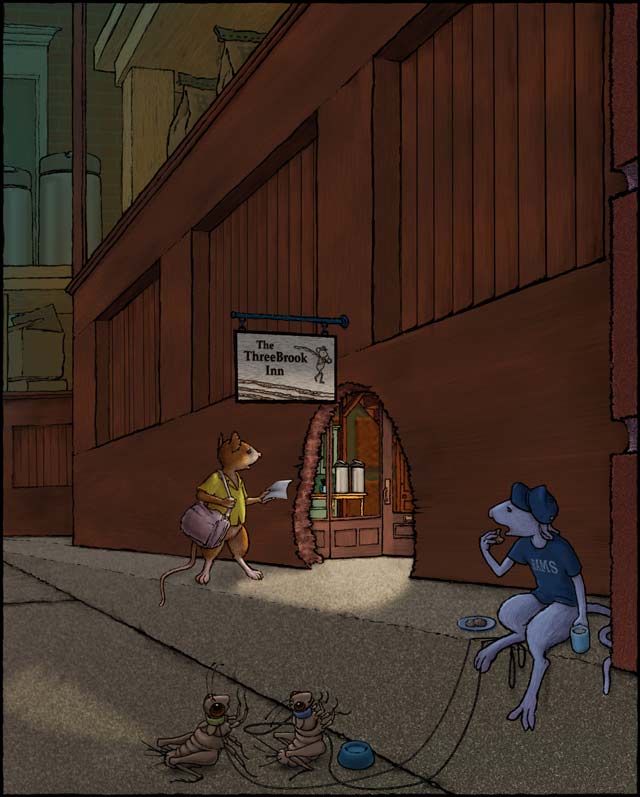
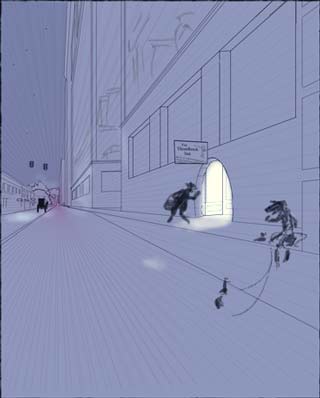 So, I may regret that. The broad shot, even in a vertical lay out, is good for placing things and setting the stage. The final view has the advantage of its open-ended-ness, certainly, but lets me push in closer to the actors. I’ll get some broad shots in later.
So, I may regret that. The broad shot, even in a vertical lay out, is good for placing things and setting the stage. The final view has the advantage of its open-ended-ness, certainly, but lets me push in closer to the actors. I’ll get some broad shots in later.